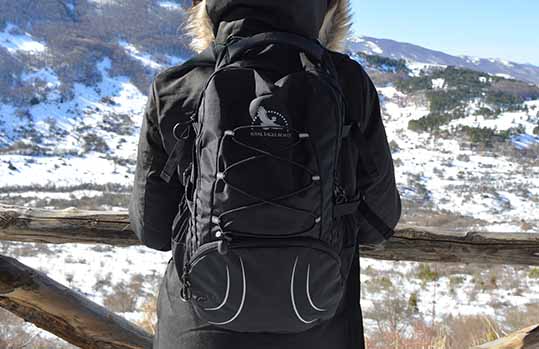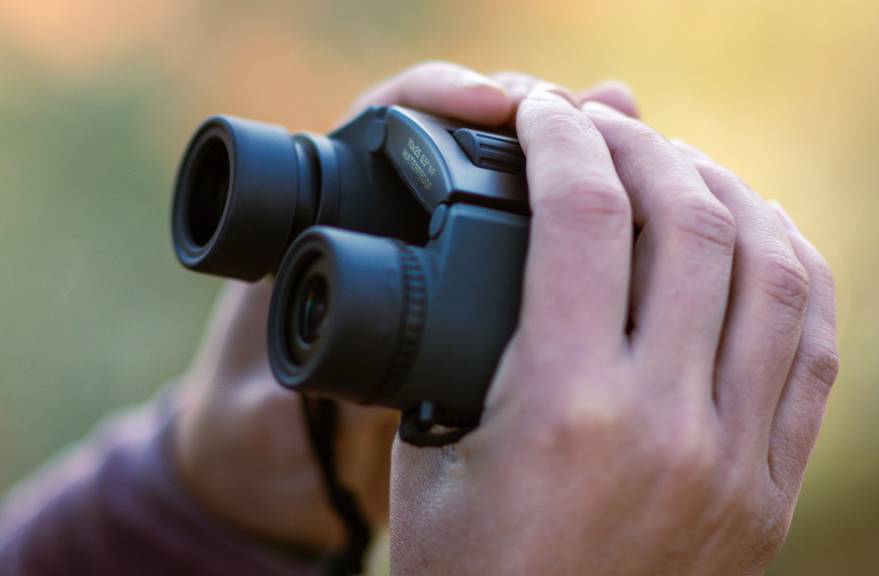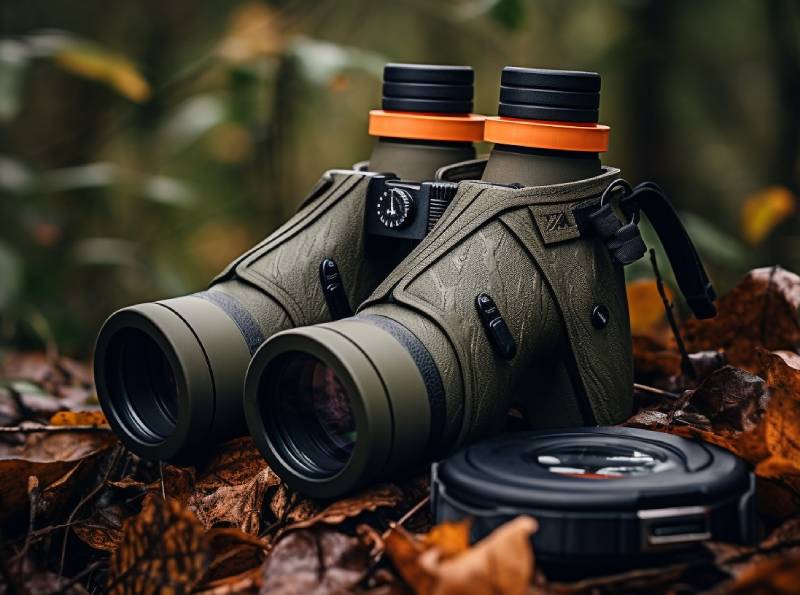The backpacks are designed to withstand all weather conditions and the challenges you will face during your adventures, hikes, travels and explorations. There are many materials that make up the backpacks and in order to choose the right backpack for you and your explorations, it is important to know the different features of the fabrics.
Trekking backpacks, as well as camping and outdoor gears, are mainly made of nylon or polyester but there are also other materials out there.
In this guide you will find:
- Nylon
- Polyester
- Cordura
- Cotton canvas
- PVC
- Leather
- Coating and PU treatment
- Nylon and polyester backpack: differences
- What does ripstop mean?
- How to understand if a fabric is strong and durable?
WHAT ARE THE MATERIALS OF THE BACKPACKS?
NYLON
Nylon is a synthetic fabric that comes from plastics (polyamides). It is one of the most common materials in outdoor backpacks since it is a sturdy, elastic, wear-resistant fabric. It is also one of the most expensive. Nylon backpacks are not completely waterproof. For this reason, they often come with internal linings to protect the contents and treated externally to increase water resistance. To the touch, nylon backpacks are soft and have a more shiny appearance.
POLYESTER
Polyester is a synthetic fiber, which is strong and resistant to tears and has a greater resistance to ultraviolet rays (UV). For these reasons, it is a common material for outdoor backpacks. During outdoor activities such as travel and hikes, continuous exposure to the sun can damage or crack the material, so the resistance to UV rays adds greater protection to the backpack. The backpack made of polyester will keep the color longer without losing its hue and will not create creases. Polyester is a fabric that does not absorb water and dries quickly, so the backpack is perfect for hiking in the snow or during rainy days.
Our backpacks Brigante 28 liter, Santiago 45 liter and Himalaya 65 liter are made in Polyester Ripstop 600 D.
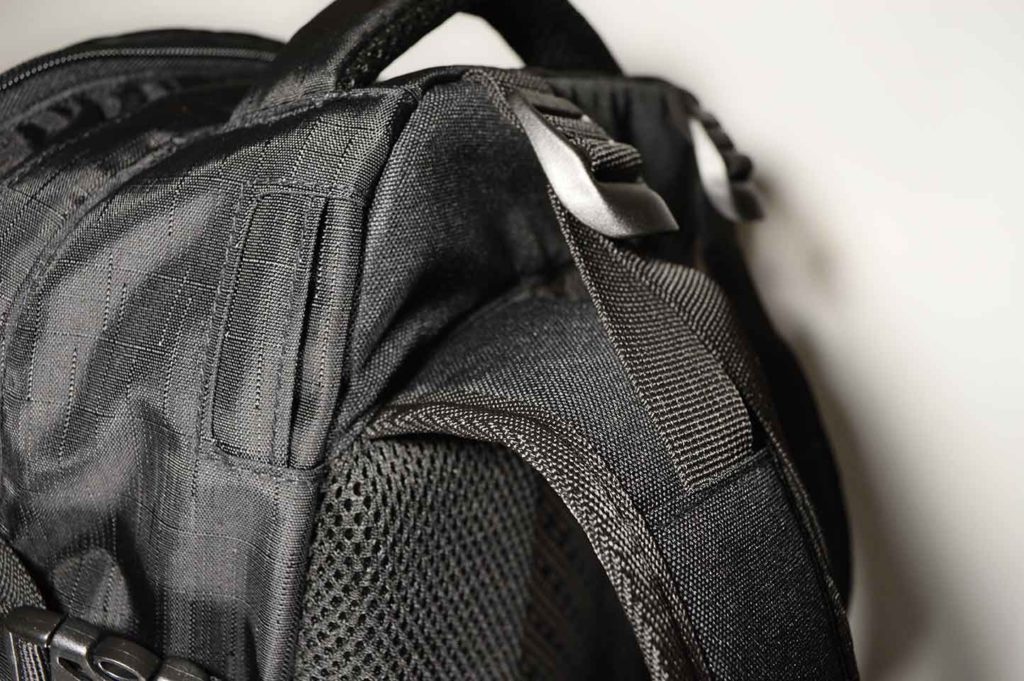
CORDURA
Cordura is an excellent quality fabric used in high-end backpacks and highly technical products that require optimal performance such as military and sports clothing. It stands out for its strength, durability, abrasion resistance and higher cost.
COTTON CANVAS
Canvas is a sturdy and durable material that uses cotton in the manufacturing process. However, this material is rather heavy, not very waterproof and poorly resistant to abrasion. For this reason, cotton canvas backpacks are not suitable for outdoor activities while waterproof, light and resistant materials such as nylon and polyester are more appropriate. Nowadays, canvas backpacks are still very popular but manufacturers often combine cotton with other materials to lighten the weight and treat them with wax to increase waterproofing and resistance.
PVC
PVC is the abbreviation for polyvinyl chloride and is a durable and multipurpose material to create backpacks and also many types of workwear. They are naturally waterproof and prevent water, sand, mud and dust from passing through the fabric and reaching the inside of the backpack. They are also fireproof, and when used in backpacks, add color and waterproofness. PVC is a durable and lightweight backpack material, but in case of tears, it is difficult to repair.

LEATHER
With a vintage and elegant look, leather backpacks have been fashionable for many generations. It is a durable and flexible material but heavier compared to other materials. They need the care to maintain quality and cannot be machine washed. Since leather derives from animals, nowadays there are many alternatives in imitation leather that ensure the same appearance but are industrially produced with synthetic materials that don’t come from animals.
COATING AND PU TREATMENT
In the product features, you may have found a PU treatment. This abbreviation means Polyurethane and refers to the coating applied to the outside of the backpack to make it more waterproof.
The duration of this coating can be shortened due to long exposure to heat, excessive humidity (e.g. a wet backpack for a long time) and chemical components (such as bleach, salt, chlorine). If you store the backpack in a dry and cool place, the waterproof PU coating can last for years of exploration.
WHAT ARE THE DIFFERENCES BETWEEN POLYESTER AND NYLON BACKPACKS?
Polyester and nylon are the most common materials in trekking and outdoor backpacks. They are both synthetic fabrics that come from polymers (unlike cotton that can be found in nature) but with different production processes.
Both materials are recyclable, strong, lightweight and more durable compared to natural fabrics. Even if quite similar, they have a few different features:
- Water resistance and absorption. Polyester is more resistant to water and does not absorb it as the nylon does. In the event of a storm, a polyester backpack repels water and is more suitable for keeping all the inside contents dry. Both polyester and nylon are not completely waterproof, reason why backpacks often comeswith internal linings and coated outside with PU treatments that increase water resistance.
- Drying time. Polyester dries faster compared to nylon because it absorbs less water into the fabric. In the event of a storm, a nylon backpack would need more time to dry due to the greater amount of water absorbed.
- UV resistance. Polyester is more resistant to ultraviolet rays and fades lesscompared to nylon. In case of summer hikes under the sun’s rays, even if the polyester backpack is colorful keeps the color unchanged for longer.
- Softness, brightness and elasticity. Nylon is a more elastic fabric, soft to the touch and has a brighter look compared to polyester.
Nylon is no better than polyester. Polyester is no better than nylon. They have slight differences so nylon or polyester backpacks are both resistant but suitable for different situations.
WHAT DOES RIPSTOP MEAN?
Ripstop indicates a type of fabric where reinforcing threads are woven at regular patterns to make the material more resistant to tearing, abrasions and lacerations. These thick threads follow a grid pattern and in the event of tears, they prevent the tear from spreading throughout the fabric. That’s why it’s called Rip-stop.
Ripstop is used in products designed to withstand the toughest conditions, in direct contact with the ground or with the wind such as outdoor backpacks, travel bags, tents, sleeping bags, sportswear and camping hammocks, just to name a few.
This weaving technique not only makes the backpack more durable but also resistant to tears and water. It is for this reason that our backpacks are made of Poliestere Ripstop 600 D.
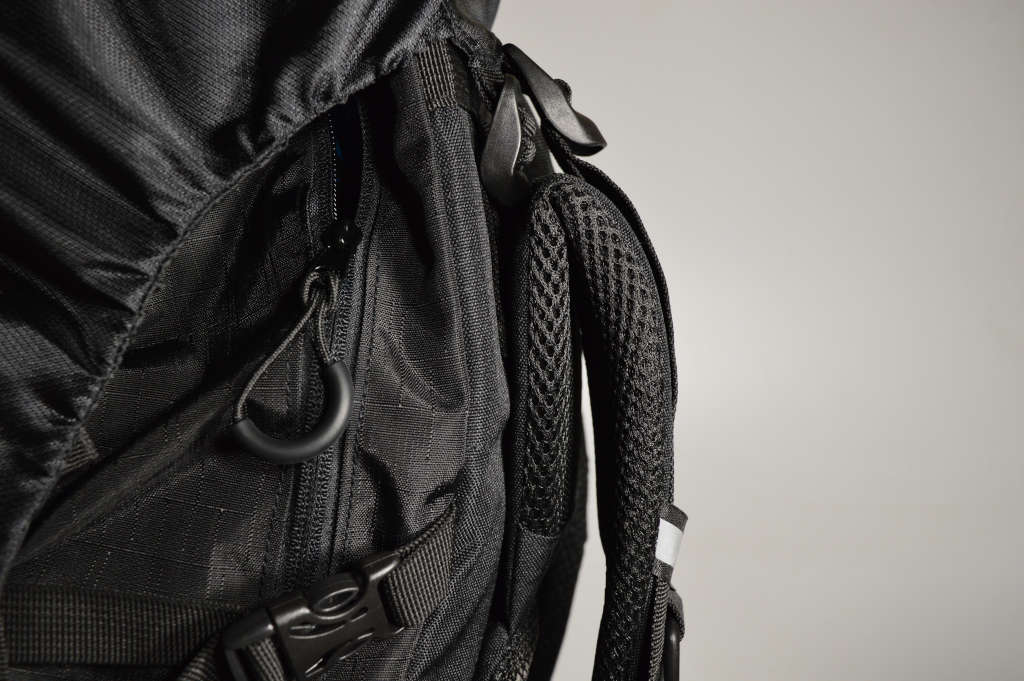
HOW TO UNDERSTAND IF A FABRIC IS STRONG AND DURABLE?
On the technical description of the backpacks, you may have found some specifications such as 600 D Polyester or 190T fabric. These values indicate the strength and resistance of the materials that make up the backpacks.
D – DENIER
The denier indicates the thickness and the weight of the filament used in the manufacture of the fabric. It refers to the mass of the material in grams for every 9,000 meters of a strand of yarn. For example, a 600 D polyester backpack indicates that 9000 meters of that fabric weigh 600 grams. The higher the denier value, the more durable and tear-resistant the fabric is. For example, a 600 D polyester backpack will be stronger than a 450 D of the same material. Although this value indicates the resistance of the fabric, it is not an absolute value common to all. Each fabric has different properties and textures so the polyester deniers will be different from those of nylon or Cordura.
T – THREADNUMBER
In backpacks and mostly in fabrics is not common to find this unit of measure. For example, in the description of our Santiago 45 liter and Himalaya 65 liter you will find the rain cover made of water repellent 190T fabric 2000 mm. T indicates the number of horizontal and vertical threads in a square inch and determines the weight of a fabric. Also in this case, a higher number indicates that the yarn is tight and consequently the fabric is more resistant.
GSM – Grams per square meter
There are materials that do not have a texture, such as propylene, where the weight or the number of threads is irrelevant. In this case, the measuring unit of the material is grams per square meter.
CONCLUSIONS
To choose a backpack suitable for your exploration, consider all the features first, take some time to read the product description and make sure the material is sturdy. A backpack made of durable material can last ages. There are different materials that make up the trekking and outdoor backpacks but the most common are nylon and polyester.
Give a look at our Brigante 28 liter, Santiago 45 liter and Himalaya 65 liter. All of them are made in ripstop polyester resistant to scratches, abrasions and UV rays with inner lining in 210D polyester. To withstand all your explorations, in Himalaya 65 liter we have added Dobby polyester and a PU treatment layer to make it more waterproof.
During outdoor activities thunderstorms are frequent. For this reason, we have added a complimentary rain cover in water-repellent 190T fabric both in Santiago 45 liter and in Himalaya 65 liter.
Get ready for your next unconventional exploration with Royal Eagle Road!
We ship from Italy to Europe!
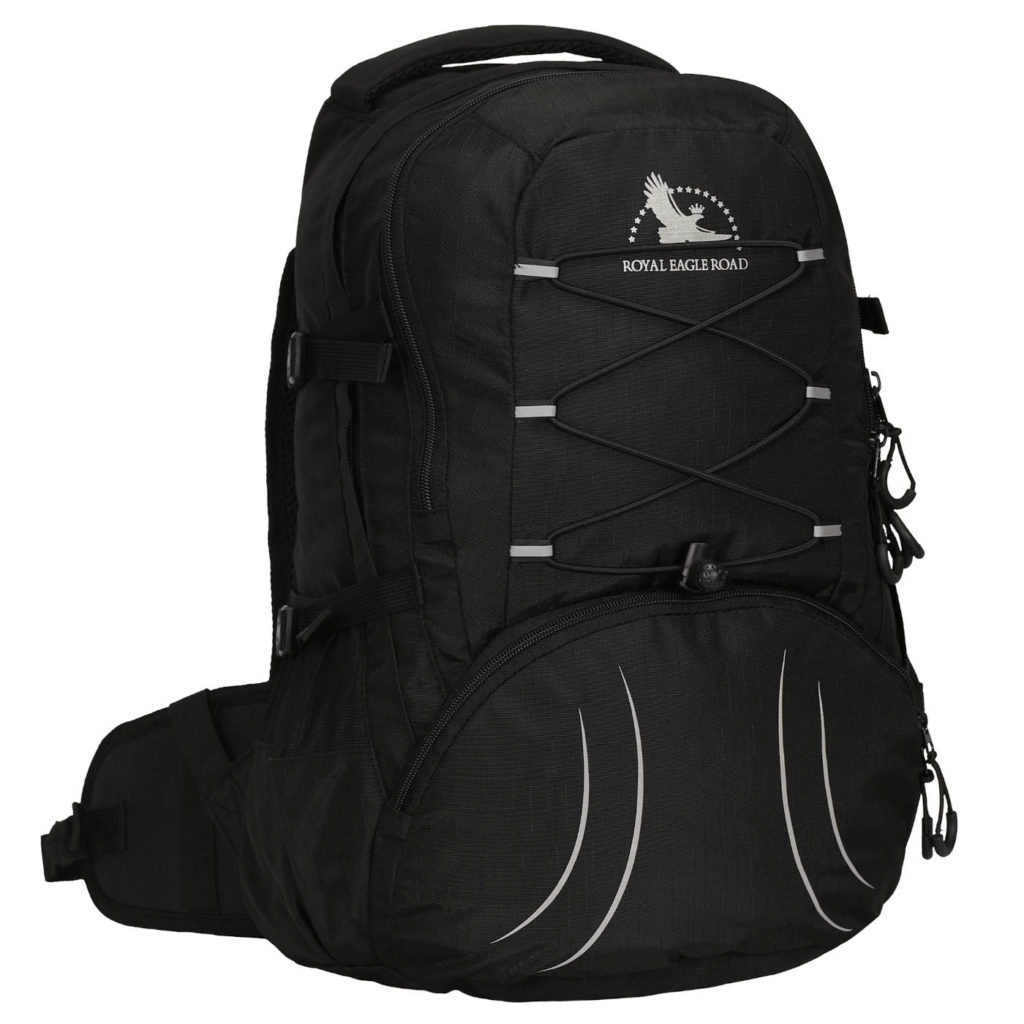
Material: Polyester ripstop PU + 600D PU. 210D Polyester lining
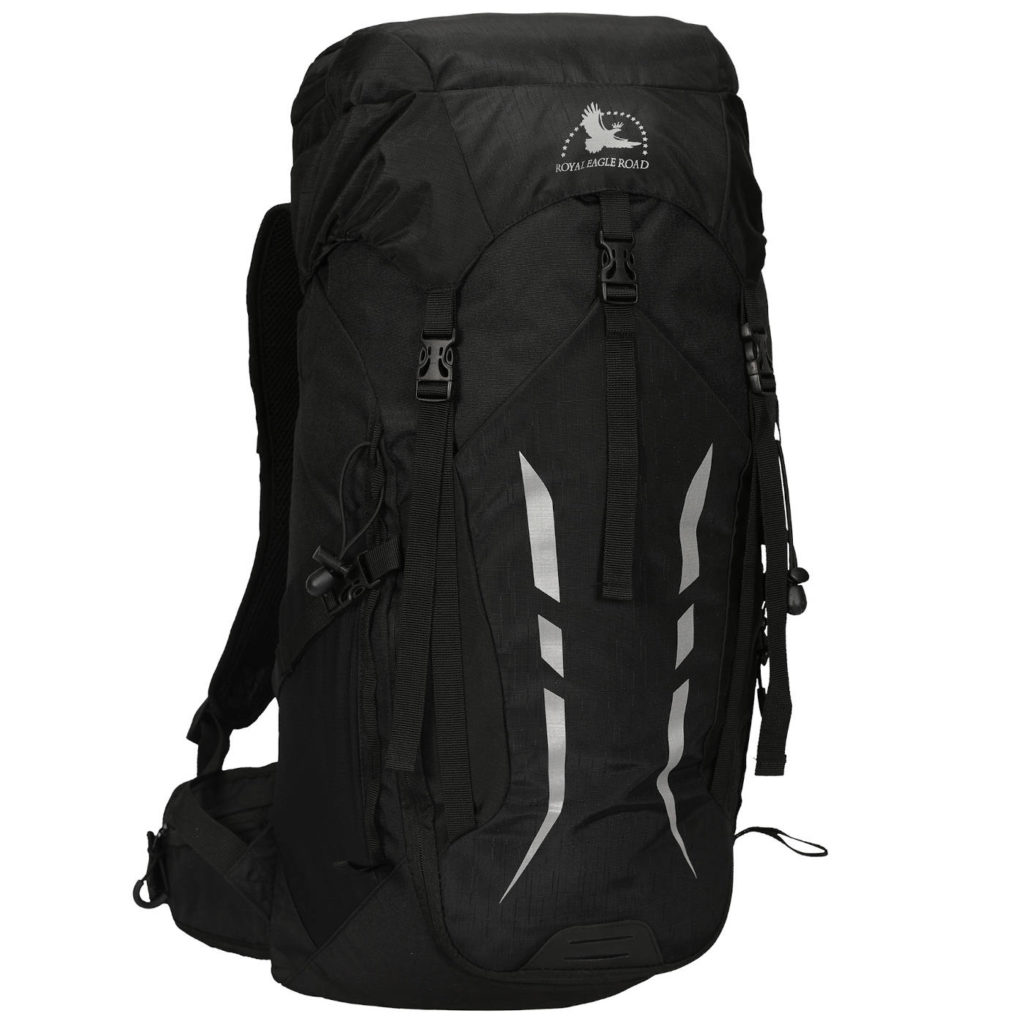
Material: Polyester ripstop PU + 600 D PU, rain cover 190T water repellent fabric 2000mm
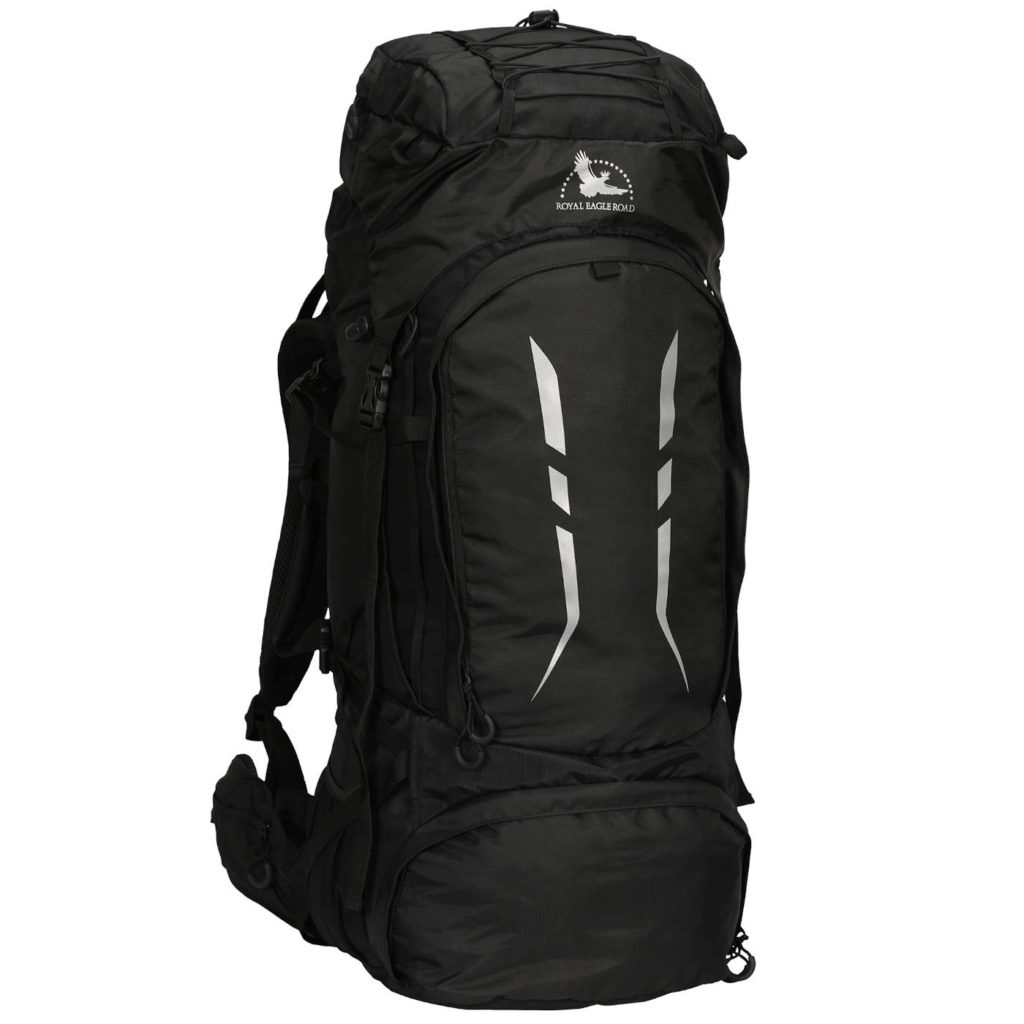
Material: Polyester ripstop PU + Polyester Dobby PU + 600 D PU, rain cover 190T water repellent fabric 2000mm
Posts you may like:

